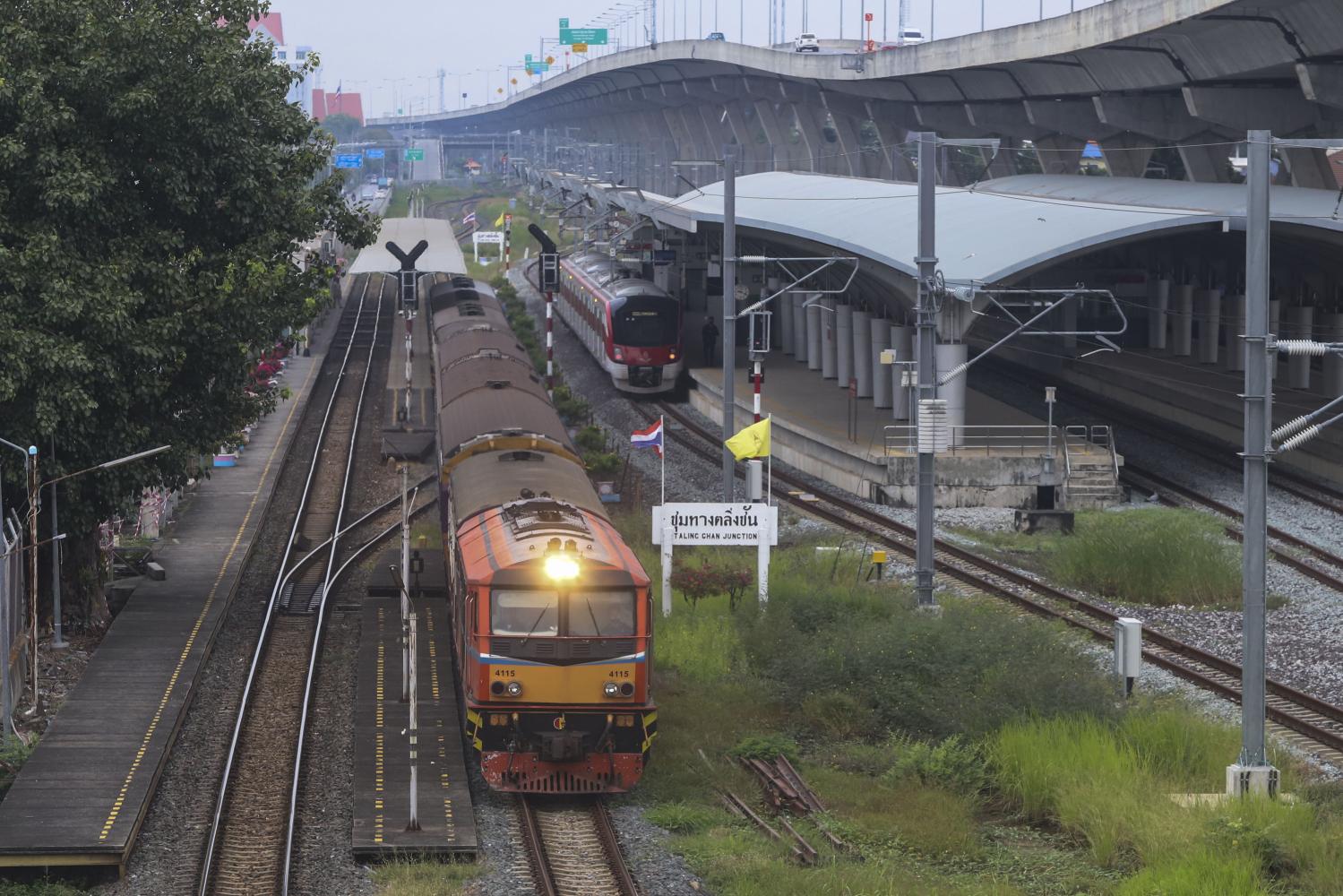
The State Railway of Thailand (SRT) has unveiled its new suburban railway routes to be used once Bang Sue Grand Station becomes Bangkok's rail system hub replacing the 105-year-old Hua Lamphong station on Dec 23.
After the closure of Hua Lamphong, the SRT will alter the final destination of northern and northeastern lines so they stop at Bang Sue Grand Station, while the eastern line will stop at Makkasan Station.
Changes for the southern line have been postponed to next year.
The plan follows a 20-year national strategy aimed at reducing level crossings in 27 locations in the capital to help alleviate traffic congestion, Pichet Kunadhamraks, deputy director-general of the Rail Transport Department, said on Wednesday.
Since the official launch of the Red Line railway on Monday, the SRT has received positive feedback, he said, while adding more than 10,000 commuters who use the line daily.
Mr Pichet said Transport Minister Saksayam Chidchob also told the SRT to launch public hearings to hear feedback about the proposed closure of the three railway lines to Hua Lamphong prior to Dec 23.
Currently, 118 trains head to Hua Lamphong, passing 826 times through level crossings per day causing traffic congestion on seven busy roads including Pradiphat, Ranong, Sri Ayutthaya and Phetchaburi roads at Yommarat intersection.
If railway services were cut to 22 trains a day, the traffic jams would be greatly reduced, thus benefiting commuters, Mr Pichet said.
Moreover, when the plan is implemented there will be seven fewer level crossings on the northern and northeastern lines and three fewer on the eastern and southern lines, he added.